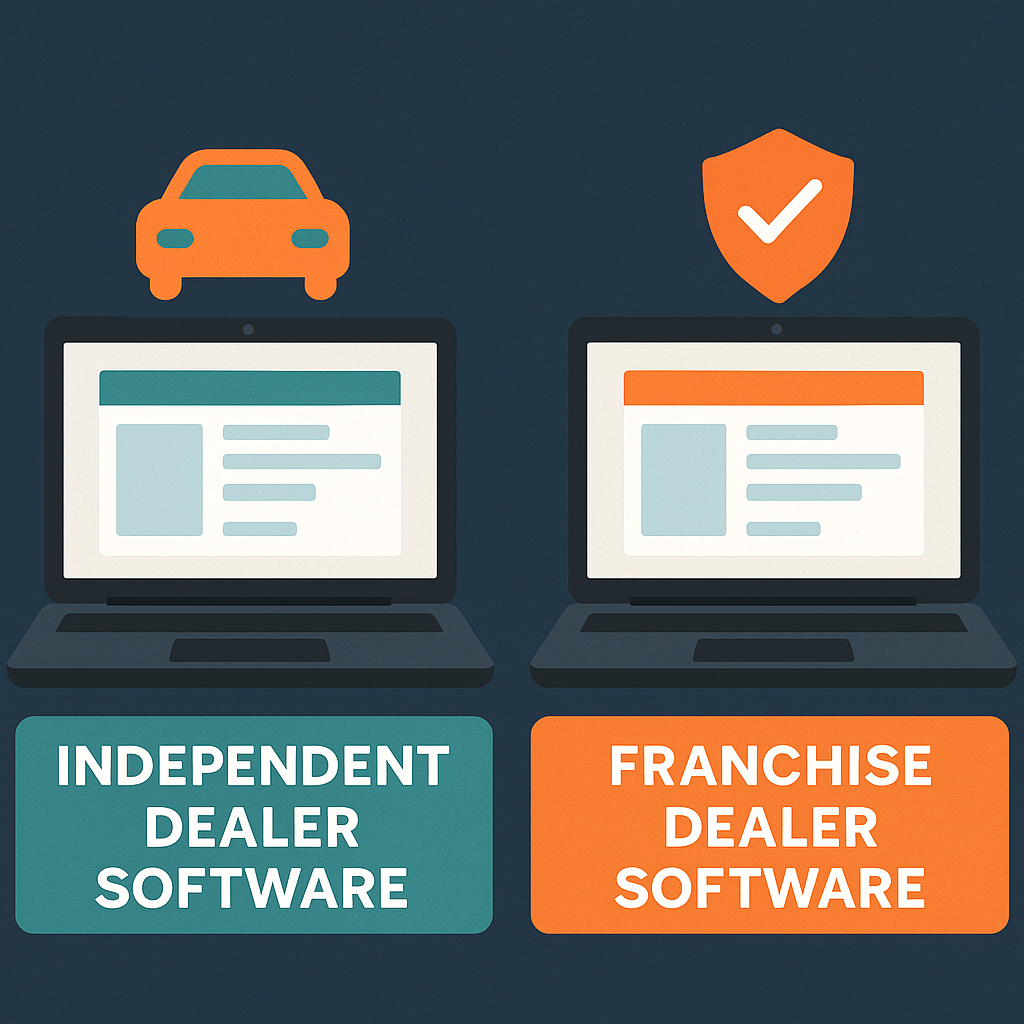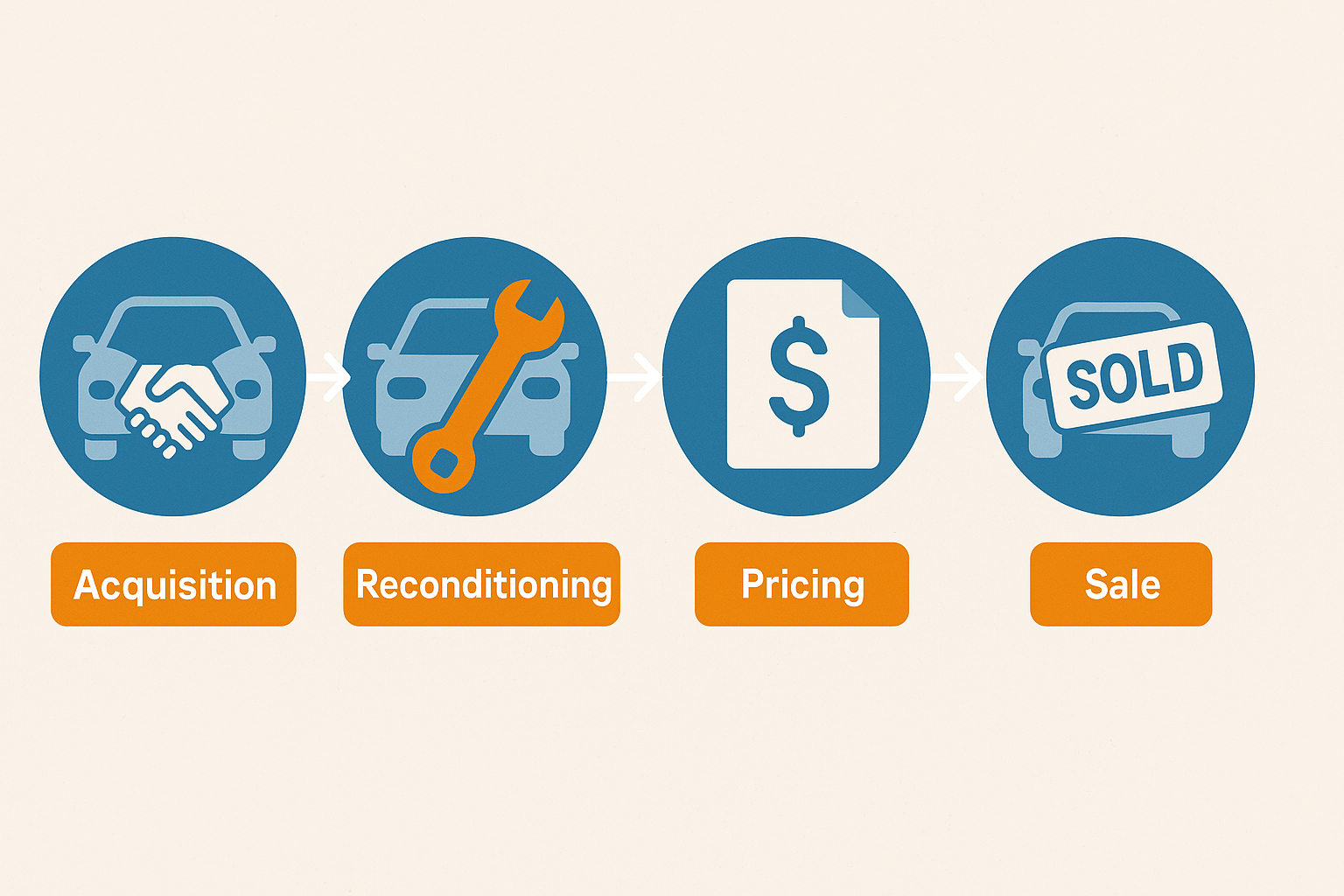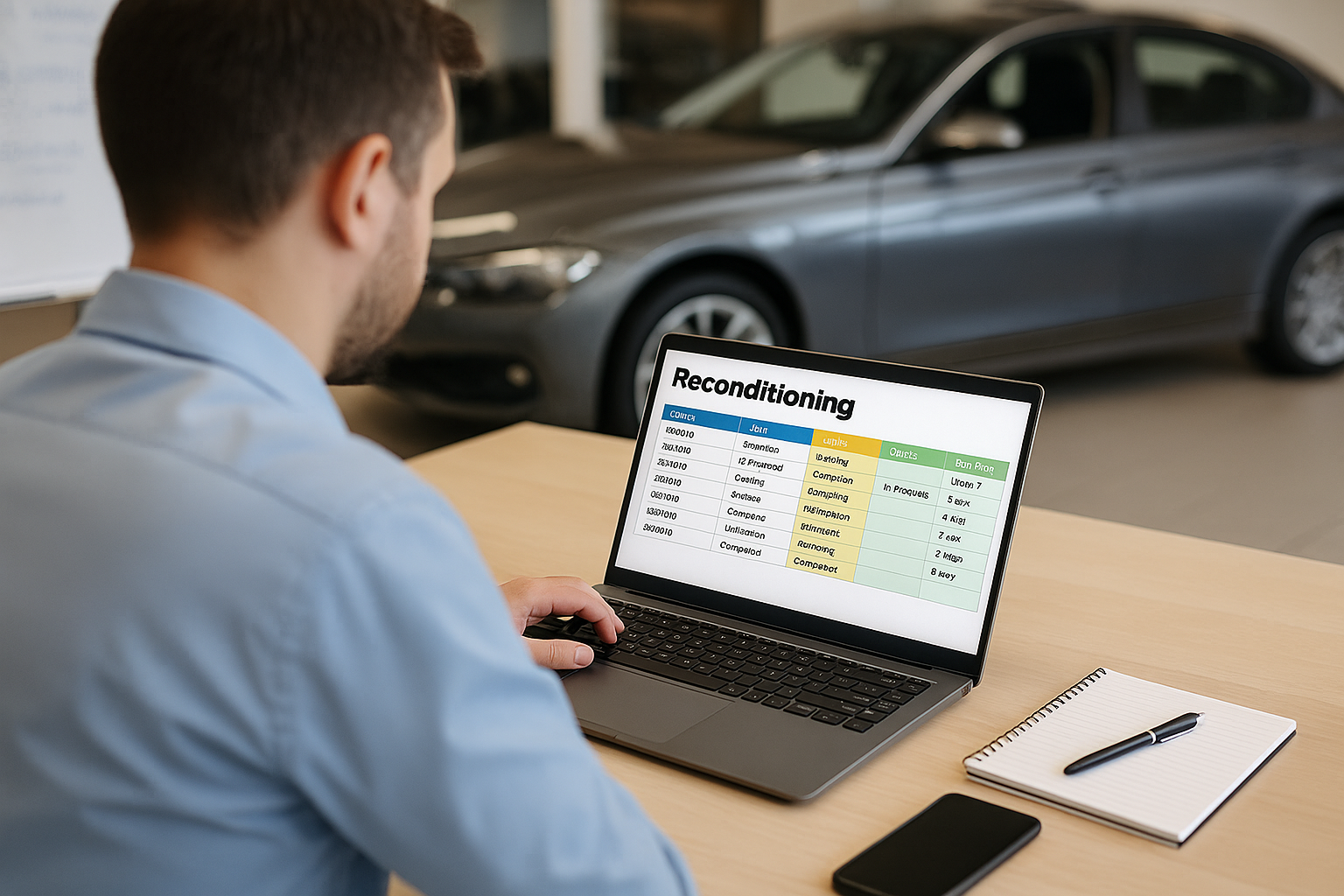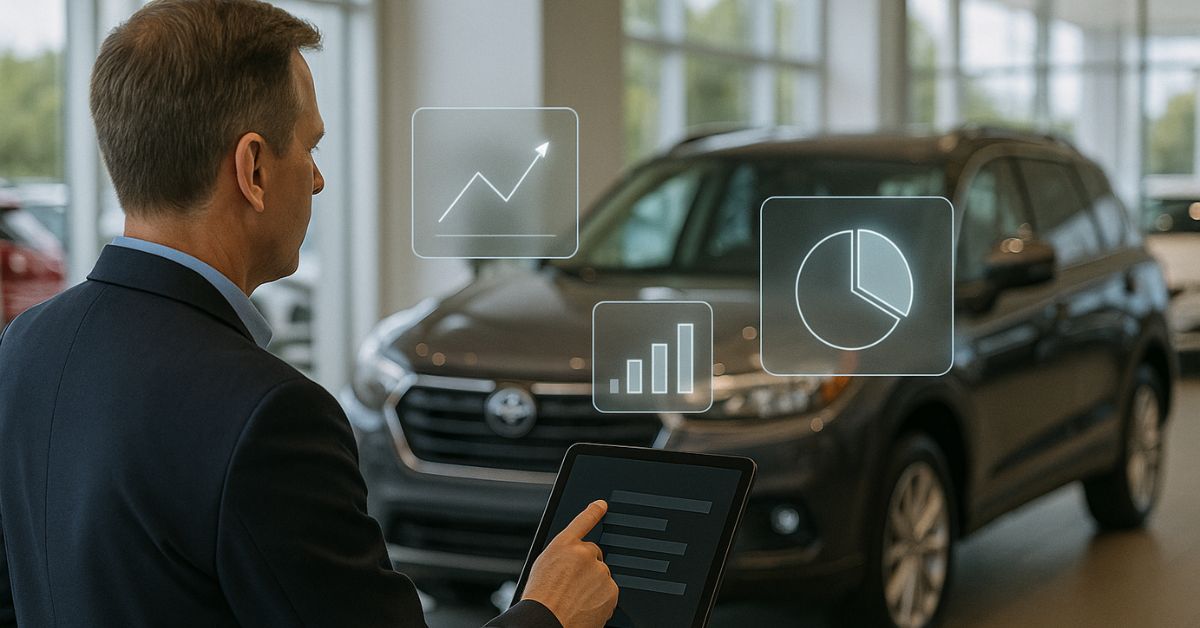The automotive industry is full of jargon and specific terms that can be confusing, especially for new car dealers or those looking to optimize their operations. To help you stay on top of your game, we’ve compiled the top 40 dealership terms you need to know. Understanding these terms is crucial for day-to-day operations, optimizing your dealership’s performance, and ensuring your success in the highly competitive automotive market.
1. Appraisal
The process of determining a vehicle’s value, often used during trade-ins or vehicle acquisitions. Accurate appraisals are key to maximizing profit.
2. Reconditioning (Recon)
The process of repairing or cleaning used vehicles to make them sales-ready. Carketa’s reconditioning software helps streamline this process to get vehicles to the frontline faster.
3. F&I (Finance & Insurance)
The department in a dealership responsible for securing vehicle financing and selling insurance products such as extended warranties.
4. Inventory Management
The system or process dealers use to track, price, and manage their vehicle stock. Effective inventory management is essential to meet customer demand and avoid overstock.
5. Wholesale
When a vehicle is sold to another dealer or auction, rather than to a retail customer. Dealers wholesale vehicles that don’t fit their inventory profile or aren’t selling well.
6. Turn Rate
A metric that tracks how quickly inventory is sold. Higher turn rates indicate efficient sales processes.
7. Gross Profit
The profit made from selling a vehicle, calculated by subtracting the cost of goods sold (COGS) from the sales price.
8. Front-End Profit
Profit made from the sale of the vehicle itself, excluding any backend products.
9. Backend Profit
Profit made from selling additional products like warranties, maintenance plans, and insurance in the F&I department.
10. Trade-In Value
The amount a dealership offers to a customer for their current vehicle when they purchase a new or used car.
11. ACV (Actual Cash Value)
The actual value of a vehicle, often determined by appraisals or market conditions.
12. Blue Book Value
The value of a vehicle as published in the Kelley Blue Book. It serves as a guideline for appraisals.
13. OEM (Original Equipment Manufacturer)
Refers to the manufacturer of the car, such as Ford, Toyota, or BMW. OEM parts are components made by the car’s manufacturer.
14. Certified Pre-Owned (CPO)
A used vehicle that has been inspected, refurbished, and certified by the manufacturer or dealership, usually with an extended warranty.
15. Buy-Here, Pay-Here (BHPH)
A dealership financing model where the dealer provides in-house financing to customers, usually targeting buyers with poor credit.
16. MSRP (Manufacturer’s Suggested Retail Price)
The price recommended by the vehicle’s manufacturer. Dealers often sell below or above this price, depending on market conditions.
17. Holdback
A portion of the vehicle’s price paid by the manufacturer to the dealer after the vehicle is sold. This helps the dealership cover overhead costs.
18. Desk a Deal
The process of negotiating and structuring a deal, often managed by the sales manager or finance manager.
19. Bump
A negotiation tactic where the salesperson increases the customer’s initial offer, typically by focusing on monthly payments.
20. Upsell
A strategy where the salesperson encourages the customer to purchase more expensive options or add-ons, such as extended warranties or accessories.
21. Lead
A potential customer who has shown interest in purchasing a vehicle, either through visiting the dealership or submitting an inquiry online.
22. CRM (Customer Relationship Management)
Software used by dealerships to manage interactions with potential and existing customers, track sales leads, and improve customer satisfaction.
23. BDC (Business Development Center)
A department focused on handling leads, setting appointments, and following up with customers, usually through calls and emails.
24. VIN (Vehicle Identification Number)
A unique 17-character code assigned to every vehicle, used to track its history, including title information, accidents, and repairs.
25. PDI (Pre-Delivery Inspection)
A final inspection conducted by the dealership before delivering a vehicle to the customer to ensure it’s in optimal condition.
26. Floor Plan
A financing method where dealers borrow money to purchase inventory. The lender holds the vehicle’s title as collateral until the vehicle is sold.
27. Equity
The difference between a vehicle’s value and the remaining balance on a loan. Positive equity means the car is worth more than what’s owed.
28. Ups
Slang for customers who walk into the dealership without a scheduled appointment or prior interaction.
29. Profit Predictor
A feature of Carketa’s Auto Finder that uses AI to provide recommendations on which cars to buy, helping dealers maximize profit opportunities.
30. Turn and Earn
A manufacturer’s program that rewards dealerships that sell cars quickly (high turn rates) with additional inventory.
31. Pencil a Deal
The act of creating an initial offer or deal structure for a customer, often involving back-and-forth negotiations.
32. Hard Add
Additional products or services that are offered after the initial vehicle purchase, such as extended warranties, maintenance packages, or aftermarket accessories.
33. Rebate
A discount or cash incentive provided by the manufacturer to encourage sales. Dealers may also offer rebates to sweeten a deal.
34. Buy Rate
The interest rate at which a lender offers to finance a loan, which the dealer can mark up for profit.
35. Markup
The amount added to the vehicle’s cost to determine the selling price. Markups are used to cover expenses and generate profit.
36. Co-Op Advertising
A program where the manufacturer reimburses the dealer for a portion of their advertising expenses, often requiring adherence to specific guidelines.
37. DMS (Dealer Management System)
Software that helps dealerships manage operations, including inventory, sales, financing, and customer relationships.
38. Pack
A built-in cost added to the vehicle’s price to cover dealership expenses. It ensures the dealership makes a profit even if the salesperson lowers the price.
39. Inventory Turn
The number of times inventory is completely sold and replaced over a specific period. A high turn rate indicates efficient inventory management.
40. VSC (Vehicle Service Contract)
An optional protection plan purchased by customers to cover repairs and services beyond the manufacturer’s warranty.
Final Thoughts
Understanding these key dealership terms is crucial for running a successful car dealership. From appraisals to backend profit and from inventory management to F&I, knowing the right terms will not only improve your internal operations but will also help you better serve your customers. Whether you’re new to the dealership world or an experienced pro, mastering this language is essential to your dealership’s success.
For car dealers looking to streamline operations and maximize profit, Carketa offers a comprehensive suite of tools that integrate seamlessly with your dealership. Explore Carketa’s innovative products today!






